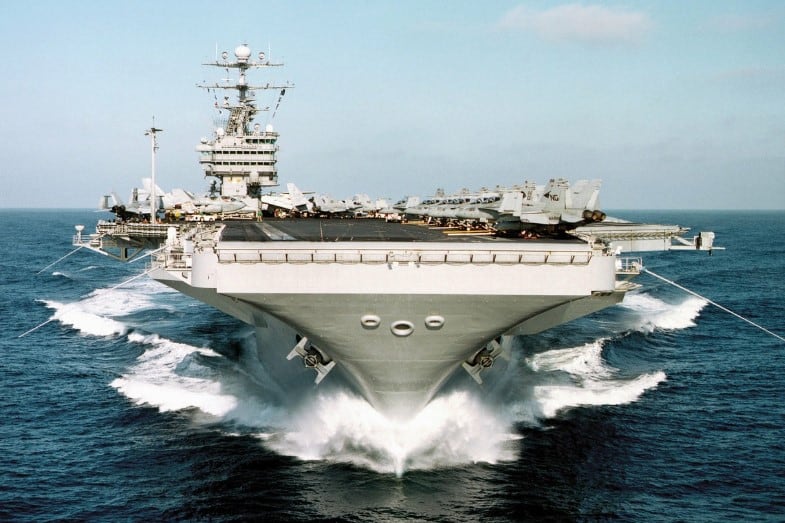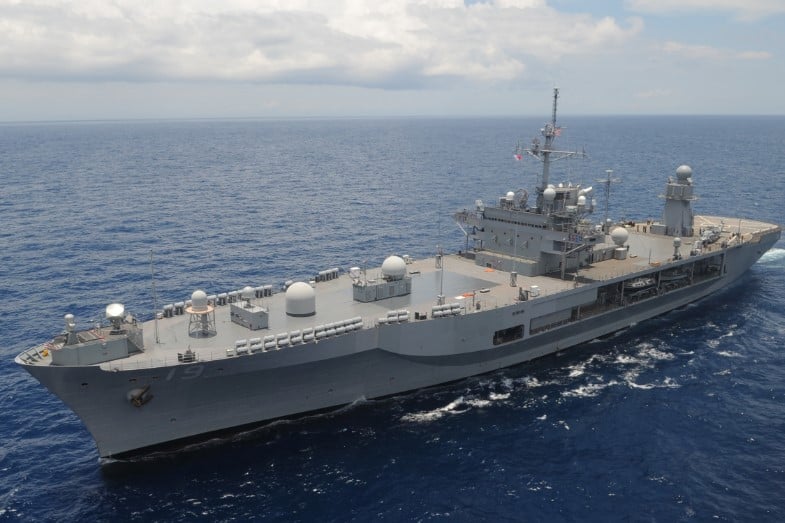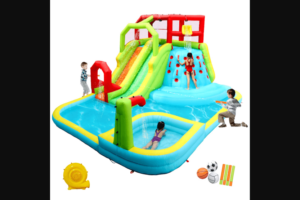There are hundreds of ships in the U.S. Navy. What are the different types of navy ships?
The different types of ships in the U.S. Navy are as follows:
- Cruisers
- Frigates
- Aircraft Carriers
- Destroyers
- Submarines (Ballistic, Attack, and Cruise Missile)
- Amphibious Warfare Ships (Assault Ships, Command Ships, Transport Docks, Dock Landing Ships, and Expeditionary Mobile Base)
- Littoral Combat Ships
There was another type of Navy ship, battleships; however, battleships are no longer in service in the United States Navy or the navies of other countries.
Read on to learn more about the different types of navy ships and their features.
Types of Navy Ships [7 Types]
The United States Navy maintains hundreds of different ships, each fulfilling its own duties and responsibilities. Moreover, there is a huge variety in their sizes, features, and capabilities. Here is a list of the types of ships included in the U.S. fleet. I will list some of the ships along with their sizes, features, and other notable aspects.
1. Cruisers
Cruisers are actually warships built to deliver maximum firepower. They can take out everything that their strike groups can face. Cruisers are high-cost and narrow mission-capable ships that only a few countries can afford. These countries are the United States, Peru, and Russia.
The term cruiser refers to a certain type of mission, such as raiding, independent scouting, or commerce protection. These ships come in different sizes, from the small protector cruisers to the bigger armored cruisers, which are as big as battleships.
Battleships became obsolete in the late 20th century, and cruisers took over their main role. These roles often include shore bombardment, commerce raiding, and air defense.
An example of a U.S. Navy cruiser is the Ticonderoga-class ship. The U.S. Navy has 22 of these ships in active service. A ship of this class is 567 feet (173 meters) long, with a 9,600 long tons displacement. It has a speed of 32.5 knots. Thirty officers and 300 enlisted men man this ship.
2. Frigates
Frigates are ships that are smaller than destroyers. Their main role is to protect other ships, such as merchant or commercial ships. They can conduct anti-submarine warfare duties as well. However, they have limited capabilities. They are also cheaper to build compared to destroyers.
The last U.S. Navy frigate was decommissioned in September 2015. But in 2015, Ray Mabus, the U.S. Navy Secretary, announced that the ships belonging to the littoral combat ship category would be reclassified as frigates.
An example of a U.S. Navy frigate is the guided-missile frigate. This class of ship has a length of 496 feet (19.81 meters) and has a displacement of 7,400 short tons. One hundred forty crew members man it.
3. Aircraft Carriers
An aircraft carrier is a huge naval vessel that functions as a mobile airbase. It has a long, flat deck where aircraft from its carrier air wing can take off and land at sea. Aircraft carriers are the biggest naval ships in the world. Some of these ships weigh more than 100,000 tons and can accommodate nearly 6,000 men.
United States Navy aircraft carriers are deployed not just on its coasts but also around the world. The U.S. shows to all nations around the world that it can act within striking distance at any country that will cross its global intentions.
This country’s carrier fleet participates in joint military exercises with friendly countries. The fleet can quickly respond to any crises that threaten its national security. An aircraft carrier’s power lies in the aircraft represented by its carrier air wing.

Aircrafts stationed in an aircraft carrier are a mixture of fixed-wings and rotary-wings. One carrier air wing can conduct more than 150 strike missions at any one time and hit more than 700 targets per day.
An example of a U.S. Navy aircraft carrier is the Nimitz class. A ship of this class has a displacement of 100,000 to 104,600 long tons. Its overall length is 1,092 feet (332.8 meters). Six thousand and twelve crew members man it, including its air wing. This ship can travel at 30+ knots.
4. Destroyers
Fourth on our list of the different types of US navy ships are the destroyers. Destroyers are types of naval ships that can maneuver quickly and can endure long-range trips. They are mainly used as escort ships to a battle group, convoy, or fleet. The role of destroyers is to defend bigger groups of military ships against smaller but powerful short-range attackers.
Destroyers were first developed during the latter part of the 19th century. Their role was to defend friendly ships from torpedo boats. By 1904, they became known as torpedo boat destroyers – earning them their current name destroyers. The destroyers back then were larger, faster, and powerfully armed to destroy short-range attackers.
These types of ships were the most widely used in the world because of their flexibility. They have the perfect combination of high endurance and high firepower, making them ideal for war and peacekeeping efforts. In terms of weight, destroyers are next to cruisers.
An example of a destroyer in the U.S. Navy is the Arleigh Burke class. A ship in this class has an overall length of 505 to 509 feet (154 to 155 meters) and can travel at 30+ knots. There are 67 active ships in this class. Twenty-three officers and 300 enlisted men run one ship.
5. Submarines
Submarines are naval watercraft that can operate underwater independently. The U.S. Navy operates three types of submarines, namely, ballistic, attack, and cruise missile. They are classified into different classes to signify their primary missions.
1) Ballistic Submarines
Ballistic Submarines hide underneath the sea and launch SLBMs with either conventional or nuclear warheads and take out enemy targets. They follow the second-strike policy to ensure that there is ‘no first use’ of nuclear weapons.
Newer ballistic submarines can stay longer at sea and can launch missiles at any instance. Nuclear reactors power them and give them unlimited range. An example of this submarine is the Ohio-class submarine.
This class of ship has an overall length of 560 feet (170 meters). It has a displacement of 16,764 tons and can travel at 12 knots. Fifteen officers and 140 enlisted men run this submarine. There are 18 submarines of this class in active service today.
2) Attack Submarines
The design of attack submarines is to take out enemy surface ships and other submarines. Torpedoes are their main attack weapons. They hunt their prey stealthily. Some of these submarines use cruise missiles in VLS that enable them to extend their attack range. They also have low visibility, making them ideal for protecting friendly ships and gather enemy information.
An example of an attack submarine is the Los Angeles class. A ship in this class has an overall length of 362 feet (110 meters) and a displacement of 6,927 tons when submerged. It can also travel at 20 knots submerged. One hundred twenty-nine crew members man it. There are 35 of these submarines roaming the seas of the world today.
3) Cruise Missile Submarines
Cruise missile submarines are vessels that can launch SLCMs. These vessels have superior firepower. This type of submarine can launch 154 cruise missiles without re-arming or re-fuelling. The earlier models of cruise missiles have to re-surface before launching. Current models are now able to launch missiles without being seen. Another type of cruise missile submarine is the Ohio class.
6. Amphibious Warfare Ships
Sixth on our list of the different types of naval ships are the amphibious ships. The U.S. Navy uses five types of amphibious warfare ships. There are different classes of these types of ships due to the role they play in military operations. These five classes are as follows:
1) Amphibious Assault Ships
These ships are also called landing helicopter dock (LHD) and landing helicopter assault (LHA) ships. Their role is to land and support ground forces on the enemy territory through an amphibious attack.
The design of these ships evolved from aircraft carriers converted to helicopter carriers. Its difference is that it can support amphibious landing crafts. Most of these ships have well decks. Moreover, the current design of these ships includes the support of fixed-wing aircraft. In effect, they are coming full-circle because their usage is just like an aircraft carrier.
An example of this ship is the Wasp class. A ship in this class has an overall length of 843 feet (257 meters) with a displacement of 40,500 long tons. There are eight active ships in this class in the U.S. Navy. This class of ship can travel at 22 knots and has 64 officers and 1,064 enlisted men.
2) Amphibious Command Ships
These ships are big vessels built for special purposes. Their design is to command big amphibious attacks. But these types of invasions seldom happen, so the role these ships play today is general command ships. The U.S. Navy uses them as the floating headquarters of two numbered forward-deployed fleet commands.
An example is the Blue Ridge-class command ship, which can travel at 23 knots. It is 634 feet (193.2 meters) long and has a displacement of 19,609 tons. There are only two active ships in service today. It has a full complement of 268 command officers and 1,173 enlisted men.

3) Amphibious Transport Docks
These ships are also called landing platform dock (LPD) ships. They are used in expeditionary warfare objectives and can transport, embark, and land elements of a landing force. In other words, these ships can transport armies by sea into a war zone, mainly through landing crafts. But they can also carry attack helicopters and other multi-mission tilt-rotor aircraft.
The San Antonio class of ships belongs to this class. A ship in this class has an overall length of 684 feet (208 meters) with a displacement of 25,300 tons. There are 11 active ships in this class.
4) Dock Landing Ships
Another term for this type of ship is landing ship dock (LSD). They have well decks and bow doors, allowing them to land military vehicles directly to the beach. Current models can also carry helicopters. These ships can transfer their cargo to landing craft even in rough seas. Moreover, they don’t need stern ramps or heavy-duty cranes to do it.
The Whidbey Island-class belongs to this class of ships. One ship has an overall length of 609 feet (186 meters) with a displacement of 16,100 tons. There are only eight ships in active service today in the U.S. Navy.
5) Expeditionary Mobile Base
These ships are semi-submersible and flexible platforms that can conduct large-scale movements of logistics. They can transfer equipment and vehicles from sea to shore. EMBs can minimize the U.S. Navy’s dependence on foreign ports considerably. They can also give support to troops that cannot find any port of embarkation.
Included here is the Lewis B. Puller class of ships. A ship in this class has an overall length of 764 feet (233 meters), with a displacement of 78,000 long tons. There are only two ships in active service in the U.S. Navy today.
7. Littoral Combat Ships
Last on our list of the different types of US navy ships are Littoral Combat Ships. These U.S. Navy ships are small surface vessels. Their design is to be close to the shore or the littoral zone, where bigger ships cannot operate. They work in an agile, networked, and stealthy manner. These ships are capable of overcoming asymmetric and anti-access threats near the shore or in the littoral zone.
They are the latest breed of navy ships that can provide multi-mission capabilities. These vessels can transform from unmanned helicopter platforms, special operations warfare, or mine-hunting to reconnaissance in just one night. They can be manned by just a small crew, thus reducing operations costs.
An example of a littoral combat ship is the Freedom class. A ship in this class has an overall length of 378 feet (115 meters), with a displacement of 3,900 long tons. It can travel at 47 knots and non-stop in 21 days or 336 hours. Also, its full complement consists of 50 core crew members and 65 with mission orders. There are nine active ships in this class.
Conclusion – Types of Naval Ships
The 7 different types of navy ships in the U.S. are as follows:
- Cruisers
- Frigates
- Aircraft Carriers
- Destroyers
- Submarines (Ballistic, Attack, and Cruise Missile)
- Amphibious Warfare Ships (Assault Ships, Command Ships, Transport Docks, Dock Landing Ships, and Expeditionary Mobile Base)
- Littoral Combat Ships
Related reading:


![Read more about the article Seaswirl Boats [What Are They? and Top Seaswirl Models]](https://boatinggeeks.com/wp-content/uploads/2021/07/seaswirl-300x200.jpg)

